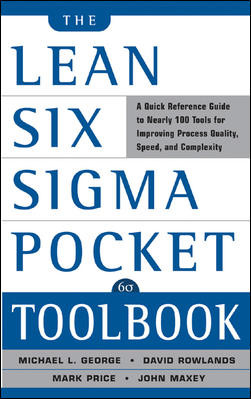Leading Lean: Make Suggestions Productive
It’s your job to make sure your suggestion program is supportive, not self-destructive.
Correctly applied, a suggestion program can be a very effective way to launch a lean journey. Unfortunately, it is also one of the most misapplied. Is the following tale familiar?
Roger is at work one day and notices that two of his coworkers are lifting sheets of material and carrying them a long distance. Roger thinks that a pneumatic hoist to move the sheets would be an improvement. So he goes to the suggestion box and writes down his suggestion on the form provided: “Install a pneumatic hoist at the sheet load station,” and drops the form into the suggestion box.
The lean steering committee (LSC) discusses Roger’s suggestion, among others, at its regular weekly meeting. Some committee members offer what they believe are better solutions, while others aren’t sure which station is being discussed. Still others are convinced that Roger’s idea won’t work, and present reasons to support their view. The LSC has plenty of time to discuss Roger’s idea because, not atypically, many of the suggestions are more requests-like improve medical benefits or change shift start time-than proposals for genuine improvement.
The LSC knows that Matthew is the engineer responsible for the sheet load station and assigns Roger’s idea to him as an action item. The LSC enters the action item, the person responsible for its execution, and due date into its project tracking spreadsheet, which is e-mailed to everyone after each meeting.
Does this sound like a bureaucracy at work? Read on!
Matthew calls an equipment vendor for a quote on installing a pneumatic hoist to lift and move the sheets. Following corporate policy, he gets two additional quotes to ensure that the pricing is competitive. Several weeks later, Matthew confirms that the price is acceptable, orders the hoist and reports the installation date to the LSC.
Its work completed, the LSC closes the action item and logs it as a completed project. More importantly, it now counts toward the LSC’s factory metric of “number of ideas implemented.” Each factory is measured on this metric and-because it is assumed that happy people contribute more ideas-this metric is part of the morale category in this company’s annual Continuous Improvement Award program. Interestingly, the LSC received the Continuous Improvement Award last year for morale improvement.
Weeks later the hoist is installed. But no one has bothered to tell the two operators who work at the sheet load station about the new hoist, so they’re caught off guard. However, they soldier on, as good troops usually do. Several of the LSC members notice the new hoist as they walk through the plant, smile, and note that progress is good.
But, they don’t see what Joey, Roger’s inspector friend, notices later that week-some of the sheet material is warped. Joey rejects several sheets, finds more warped sheets, and starts looking for the cause, which isn’t hard to find. The pneumatic hoist is centered on the sheets. As it lifts a sheet by its center, the weight of the sheet causes the corners to droop and the sheet warps. Joey calls the quality manager, who decides to pull the hoist out of the way and temporarily resume loading by hand.
Later that day, Joey submits a suggestion to remove the hoist permanently so that no one will inadvertently use it and cause more quality problems. The LSC reviews the suggestion, has the hoist removed, and gets credit for another idea implemented.
If this sounds familiar, your suggestion program is self-destructive and you should be concerned. If your suggestion program is headed into the bureaucratic swamp, it’s your job to take stock, and then take action. An effective lean journey starts with you.
Jamie Flinchbaugh is a founder and partner of the Lean Learning Center in Novi, MI, and the co-author of The Hitchhiker’s Guide to Lean: Lessons from the Road. He shares his successful and varied experiences of lean transformation as a practitioner and leader through companies such as Chrysler and DTE Energy. He also has a wide range of practical experience in industrial operations, including production, maintenance, material control, product development and manufacturing engineering. Jamie is a graduate fellow of the Leaders for Manufacturing Program at the Massachusetts Institute of Technology, where his research thesis was on implementing lean manufacturing through factory design. He also holds a B.S. in Engineering from Lehigh University in Bethlehem, PA, and an M.S. in Engineering from the University of Michigan. To contact Jamie directly, go to the web site www.leanlearningcenter.com.
Looking for a reprint of this article?
From high-res PDFs to custom plaques, order your copy today!





